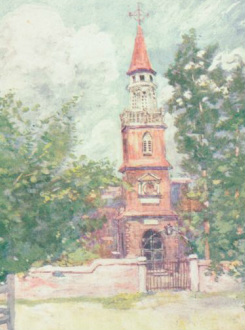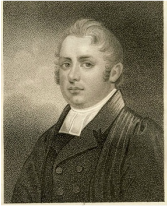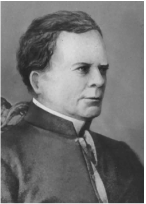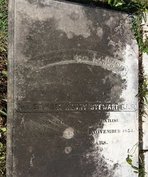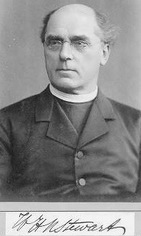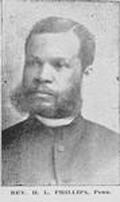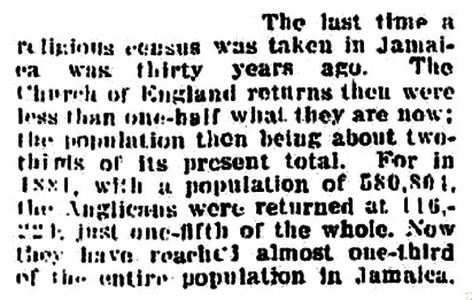Missionaries and other Anglican clergy
Early Black Anglican clergy in Jamaica
Little has been written in a hundred years on the Black clergy of the Anglican Church in Jamaica in the nineteenth century; only one Black Jamaican Anglican priest, the Rev Robert Gordon, has received any serious attention, and he was never the incumbent of a church in the island. In these pages I hope to recover the stories of at least five other Black Anglican priests, four Jamaicans and one from Sierra Leone, all of whom were incumbents of Anglican Churches in the island.
The thesis has been expressed that there were no Black Anglican clergy in Jamaica before 1904, which raises one set of issues; the fact that there were such clergy introduces interesting new issues, which I hope other researchers will take up and debate.
The thesis has been expressed that there were no Black Anglican clergy in Jamaica before 1904, which raises one set of issues; the fact that there were such clergy introduces interesting new issues, which I hope other researchers will take up and debate.
|
In his book on the Anglican/Episcopalian Church in Jamaica, Roots and Blossoms, the Rev Dr Edmund Davis makes a categorical statement -
'Between 1843 and 1904, no black man was admitted to the ministry of the Church in Jamaica'. [p 67] He also holds Archbishop Nuttall responsible for this fact, at least in part, when he writes 'But not even the great Enos Nuttall had the wisdom to see that the black man could be trained to fill the vacant churches.' [p35] In Theological Education in a Multi-Ethnic Society, writing of the Church Theological College, he further states 'Between 1858 and 1904, no black candidate was admitted to the college. A few applied for admission but were all rejected on grounds which may be interpreted primarily as ethno-cultural.' [p149] None of these statements will stand up under further investigation. |
In A History of the Diocese of Jamaica, Bishop E L Evans writes of
'. . . two black catechists ordained by Bishop Courtenay, Thomas Banbury in 1870 and Charles Christopher Douce in 1876. Banbury was later Rector of Hope Bay for 29 years and Douce was Rector of Manchioneal, Rural Hill and Boston from 1881 - 1904.'[p30] Although Evans does not note that either man was priested, the fact that they were both rectors of churches for long periods of time at least suggests that they might have been; in fact both men, identified as Black, were later priested - Banbury in 1873 by Bishop Courtenay and Douce in 1881 by Bishop Nuttall. Further research has identified at least three other Black Anglican clergy ordained in Jamaica before 1904 - R. O. Taylor, C. L. Barnes and A. Cole. There may be others yet to be identified, a process which may in part depend on what definition of 'Black' is used. |
One reason why these men have been overlooked is almost certainly because of a general reluctance at that period to identify people by their colour in official documents and publications; there is no identification of Anglican clergy by colour in any synod reports or other official publications that have been used in this research. It is only in books and the columns of newspapers, even occasionally church newspapers, that such identification is made in rare circumstances. Another reason may well be that the established perception, which may also be questioned, that the Anglican Church was then the White people’s church, made it seem pointless to look for Black clergy. The question of the colour of the Jamaican clergy does surface from time to time, somewhat surprisingly, in the church’s own newspapers. In the Jamaica Church Chronicle of November 1876 a Black man is quoted as protesting ‘that in the Jamaica Church there has been “ lately ordained a set of ignorant mulatto boys, without mental culture, or brain enough to guide those who are placed under their charge.” ’ The unexpressed implication was presumably that Black men could do a better job!
In the same paper in June of the previous year a Black catechist refuted the claim that a Maroon congregation had rejected him because he was Black, giving the explanation that the Maroons had already left the church because of previous problems with a White clergyman; there have frequently since been stories of Black congregations rejecting or resenting Black clergy, but there were apparently contradictory indications from the last quarter of the nineteenth century. In February 1881 a correspondent, in the Jamaica Churchman, wrote most movingly of the sorrow of the congregation of the mission station at Albert Town at the departure for another cure of the Rev C C Douce; there is no reference to colour, but Douce was Black and presumably most of the Albert Town congregation were too.
In the same paper in June of the previous year a Black catechist refuted the claim that a Maroon congregation had rejected him because he was Black, giving the explanation that the Maroons had already left the church because of previous problems with a White clergyman; there have frequently since been stories of Black congregations rejecting or resenting Black clergy, but there were apparently contradictory indications from the last quarter of the nineteenth century. In February 1881 a correspondent, in the Jamaica Churchman, wrote most movingly of the sorrow of the congregation of the mission station at Albert Town at the departure for another cure of the Rev C C Douce; there is no reference to colour, but Douce was Black and presumably most of the Albert Town congregation were too.
Significantly the Rev Mr Douce was mentioned in a book written many years later in 1907 - The Cruise of the Port Kingston – in which the author, W. Ralph Hall Caine, a man, at that time, of strongly racist opinions (he reputedly reformed later), wrote –
'Whether from motives of economy or necessity or with the motive of reaching the largest number, the Archbishop [Nuttall] has accepted into the priesthood the services of the black as well as the coloured native (more than half the priesthood is now black or coloured), and in the country church the congregation as a result is wholly black, the white planter and his family being never seen within its walls at any service. In many cases there is no white planter to come. But in any event I must make at least one exception to the rule, and that in the case of the Rev. Mr. Douce, now of Mooretown but formerly of Manchioneal.
Mr. Douce has enlisted the esteem of the white without forfeiting the confidence of the black, and his admitted success is one of the facts with which we have to reckon. As a clergyman candidly but rather cynically said to me, "One of the saddest facts I know is that Douce has not turned out a failure. His success is indisputable." '[pp104-5]
Here Nuttall’s policy receives a very different interpretation from that given by the Rev Dr Davis, and the Rev Mr Douce stands out as a successful example of that policy, much to the discomfiture of those opposed to the ordination of Black, and even Coloured, men.
My hope is that these pages may help to restore to the historical record a significant group of Black Jamaicans whose existence has been overlooked. It may be possible to find out more about them as individuals and understand more about their motivations, and their role in the wider community. Having researched them over several years I have come to see them as necessary to a much broader understanding of the period, and the Jamaica, in which they lived.
'Whether from motives of economy or necessity or with the motive of reaching the largest number, the Archbishop [Nuttall] has accepted into the priesthood the services of the black as well as the coloured native (more than half the priesthood is now black or coloured), and in the country church the congregation as a result is wholly black, the white planter and his family being never seen within its walls at any service. In many cases there is no white planter to come. But in any event I must make at least one exception to the rule, and that in the case of the Rev. Mr. Douce, now of Mooretown but formerly of Manchioneal.
Mr. Douce has enlisted the esteem of the white without forfeiting the confidence of the black, and his admitted success is one of the facts with which we have to reckon. As a clergyman candidly but rather cynically said to me, "One of the saddest facts I know is that Douce has not turned out a failure. His success is indisputable." '[pp104-5]
Here Nuttall’s policy receives a very different interpretation from that given by the Rev Dr Davis, and the Rev Mr Douce stands out as a successful example of that policy, much to the discomfiture of those opposed to the ordination of Black, and even Coloured, men.
My hope is that these pages may help to restore to the historical record a significant group of Black Jamaicans whose existence has been overlooked. It may be possible to find out more about them as individuals and understand more about their motivations, and their role in the wider community. Having researched them over several years I have come to see them as necessary to a much broader understanding of the period, and the Jamaica, in which they lived.
Black membership of the Anglican Church
I have neither the time nor the resources to embark on an extensive enquiry into the numerical status of the Church of England in 19th century Jamaica, and its standing among the Black population. I will just set down here a few items which may serve as a counter-balance to the proposition that the Church of England was predominantly the church of the White population.
Speaking at a conference on church missions in Britain in 1894, Bishop Nuttall said:
'With reference to the discussion this morning it is worthwhile mentioning that we have in Jamaica a church which now has over 100 clergy, over 150 native catechists, [?]00 Church schools and other agencies and instrumentalities, nearly the whole of which is supported by the voluntary contributions of the people themselves mainly coloured and black people.'
Daily Gleaner, August 9, 1894, page 7
In 1912 the Gleaner published the religion statistics abstracted from the census of the previous year; this comment was made on the change in the numbers of members of the Church of England compared with those 30 years before.
Speaking at a conference on church missions in Britain in 1894, Bishop Nuttall said:
'With reference to the discussion this morning it is worthwhile mentioning that we have in Jamaica a church which now has over 100 clergy, over 150 native catechists, [?]00 Church schools and other agencies and instrumentalities, nearly the whole of which is supported by the voluntary contributions of the people themselves mainly coloured and black people.'
Daily Gleaner, August 9, 1894, page 7
In 1912 the Gleaner published the religion statistics abstracted from the census of the previous year; this comment was made on the change in the numbers of members of the Church of England compared with those 30 years before.
In 1900 a spokesman of the Church of England in Jamaica had assessed its position thus:
And these are the statistics of religious affiliation extracted from the 1911 census:
in 1911, the population of Jamaica was 831,383.
Clearly any of these figures should taken with the proverbial pinch of salt! How many people said they belonged to the Church of England because, even after its disestablishment in 1870, it seemed to be the official church? It is interesting though that nearly 100,000 Jamaicans claimed no religious affiliation, apparently resisting any automatic 'C of E' response. However, if somewhere in the region of 150,000 Jamaicans were considered as attached to the Church of England in 1900 the vast majority of that number were certainly Black and Coloured Jamaicans, since, in the 1891 census, only 14,432 Jamaicans had been enumerated as being White.
Country congregations:
'Archbishop Nuttall has accepted into the priesthood the services of the black as well as the coloured native (more than half the priesthood is now black or coloured), and in the country church the congregation as a result is wholly black, the white planter and his family being never seen within its walls at any service. In many cases there is no white planter to come.' (W Ralph Hall Caine, 1907)
'Archbishop Nuttall has accepted into the priesthood the services of the black as well as the coloured native (more than half the priesthood is now black or coloured), and in the country church the congregation as a result is wholly black, the white planter and his family being never seen within its walls at any service. In many cases there is no white planter to come.' (W Ralph Hall Caine, 1907)
Greater Britain Messenger September/October, 1900
[The Greater Britain Messenger was published by the Colonial and Continental Church Society]
A service in a Jamaican church away back in the mountains is a revelation to a newcomer. Filled to the door with a congregation as black as black can be, with the few white people of the district sitting in the two or three front pews, they crowd their churches with an intelligent, reverent and attentive body of hearty worshippers. . . . In these mountain churches they can have but one service on the Sunday, and many of the people have walked miles down the mountain paths to attend it.
[The Greater Britain Messenger was published by the Colonial and Continental Church Society]
A service in a Jamaican church away back in the mountains is a revelation to a newcomer. Filled to the door with a congregation as black as black can be, with the few white people of the district sitting in the two or three front pews, they crowd their churches with an intelligent, reverent and attentive body of hearty worshippers. . . . In these mountain churches they can have but one service on the Sunday, and many of the people have walked miles down the mountain paths to attend it.
Some possible reasons for the lack of information about Black Anglican clergymen in Jamaica in the 19th century:
- the names of all the Church of England clergy are of European origin, providing no indication of the ethnicity of those who bore them;
- official policies in the late 19th century discouraged the use of terminology relating to colour, since there were supposed to be no distinctions based on colour; therefore the colour of an individual clergyman is rarely mentioned;
- until the early years of the 20th century there are very few photographs of clergy, in the newspapers or in books;
- over time certain stereotypical perceptions of the character of the Church of England in Jamaica in the 19th century have become well established; . . . these perceptions have tended to foster neglect of consideration of the significance of the role of Black Jamaicans in the Anglican Church.
- the names of all the Church of England clergy are of European origin, providing no indication of the ethnicity of those who bore them;
- official policies in the late 19th century discouraged the use of terminology relating to colour, since there were supposed to be no distinctions based on colour; therefore the colour of an individual clergyman is rarely mentioned;
- until the early years of the 20th century there are very few photographs of clergy, in the newspapers or in books;
- over time certain stereotypical perceptions of the character of the Church of England in Jamaica in the 19th century have become well established; . . . these perceptions have tended to foster neglect of consideration of the significance of the role of Black Jamaicans in the Anglican Church.
Sources of information:
|
Archives of the Episcopal Church (USA) http://www.episcopalarchives.org/
Canterbury Cathedral Archives:
- St Augustine's College Archive http://www.canterbury-cathedral.org/conservation/archives/ [email protected] National Library of Jamaica http://www.nlj.org.jm/
secular newspapers:
- Colonial Standard - Daily Gleaner - Jamaica Post - Jamaica Times church newspapers - Jamaica Church Chronicle - The Jamaica Churchman Church of England, Jamaica
- Synod reports |
Books:
|
|
These pages are dedicated to the memory of
David Robert 'Kew' Brown, (c 1818 - 1916) of Kew in Portland; a Black Jamaican born into slavery, he was a life-long pillar of the Church of England. |
